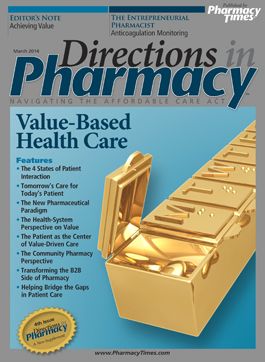Publication
Article
Pharmacy Practice in Focus: Oncology
Achieving Value
Cost is a part of the value proposition, but it needs to be put in place at the system level.

A new term in health care is “value.” When used as a noun, value can mean “the importance, worth, or usefulness of something.” When used as a verb, it can mean to “consider (someone or something) to be important or beneficial.” For all of us, health care is important and most people would say that health care has value. But what does that mean in practical terms when the consumer makes a health care decision? How does cost fit into the value system at the patient level? Should cost even play a role, some might ask?
When different treatment options are available, cost is certainly a factor in a payer’s consideration. One stimulus for health care reform to cover uninsured individuals was to improve health care access. One reason offered to support this coverage was that uninsured individuals delayed seeking medical care, or used more expensive resources such as emergency departments (EDs) when finally seeking care. If we provide these individuals with health insurance, they will seek care sooner when treatment is less expensive—and they will use less expensive resources when seeking care.
In theory, this makes sense; however, it seems as if it is not working as expected. We are all creatures of habit. So, as a recent study showed, even with coverage, some people are still using the ED for health care. This problem suggests that cost of care is not part of the value proposition for some people.
Personally, it is a part of my decision-making process in most areas of spending, but my health care decisions are different. When I need care, I don’t want to or even know how to “shop around” for a less expensive alternative. At that point, I do what I have been doing in seeking care because it has worked for me in the past. It is what I know, and I want immediate help. Some suggest that if better preventive services were available, my need for immediate care would be less. That may be true, but that doesn’t change how I behave when I do have a medical problem that requires immediate attention.
Payers may also think that I should include cost as part of my medical care decisions. They put in place “prior approval” requirements or even multi-tiered formularies to try to get me or my provider on my behalf to include cost in my health care decisions. Maybe these approaches work, but it seems as if they just lead to patients and providers being frustrated with the fragmentation of the system. My personal physician recently shared with me his frustration with these efforts by payers to control costs. As providers, we end up feeling as if some administrator is practicing medicine on our patient’s behalf rather than the provider.
Cost should be part of the value equation. I accept that fact—but until I can become a truly informed patient, I don’t think I will factor cost in at the time I seek care. Unless I gain some economic benefit from including cost as part of my decision making, I don’t think I will easily change the way I seek medical care, nor will other people.
Just to illustrate my point, I recently went through an illness and ended up using 3 different health care facilities within a week for 3 different procedures. A recent Wall Street Journal article focused on how hospital list prices for common procedures vary dramatically, even in the same area. Now that I am seeing actual copies of my bills, I can’t believe what these procedures cost! If I had known that there was a difference in prices that hospitals charged, I might have considered shopping around. However, when I was in pain from my gallstones, honestly, my mind was focused on feeling better, not saving money for my payer.
Yes, cost is part of the value proposition, but it needs to be in place at the system level, not at the time patient care services are provided.
Fred Eckel, RPh, MS, is the editor-in-chief of Pharmacy Times and co-editor of the Directions in Pharmacy series. He is a professor emeritus at the Eshelman School of Pharmacy, University of North Carolina at Chapel Hill, and emeritus executive director of the North Carolina Association of Pharmacists.







